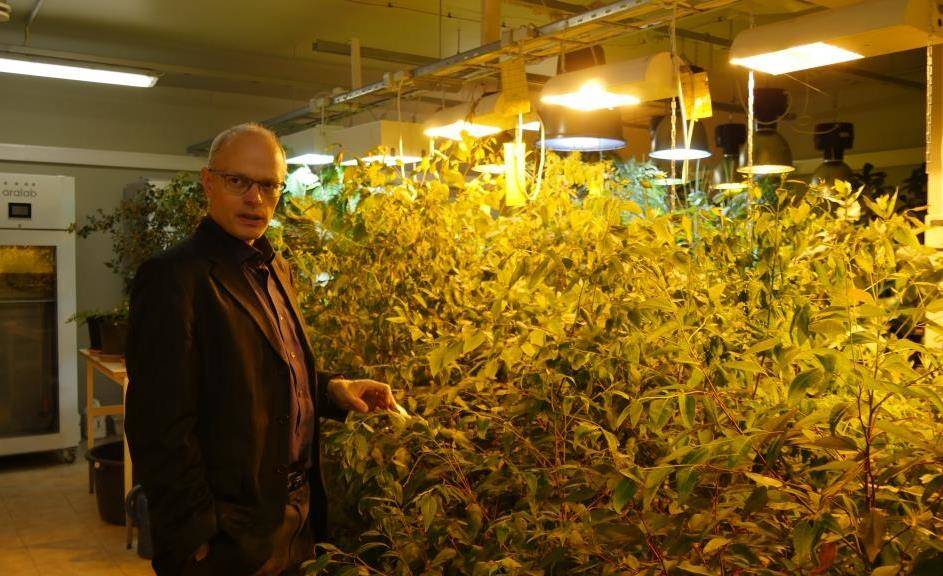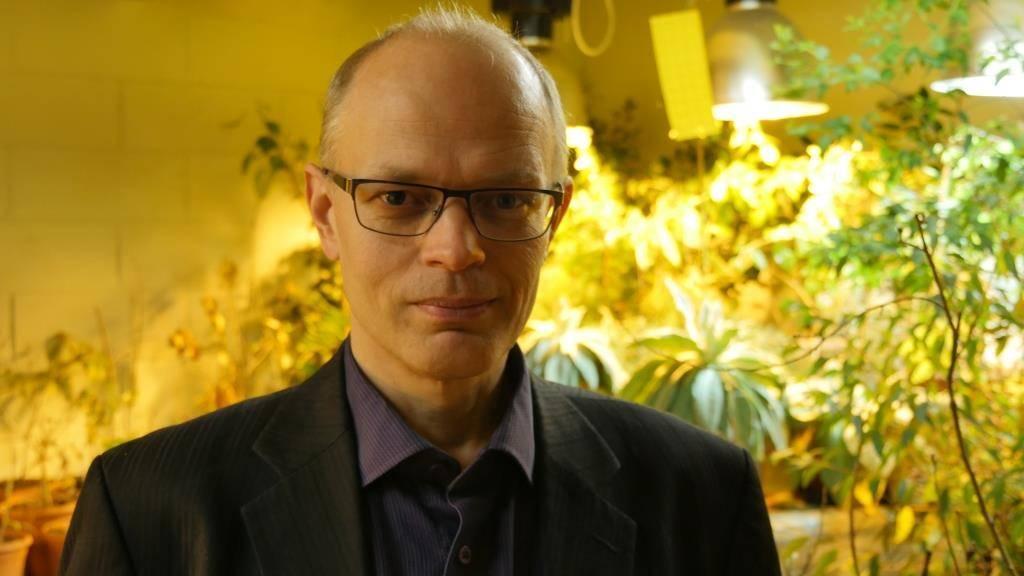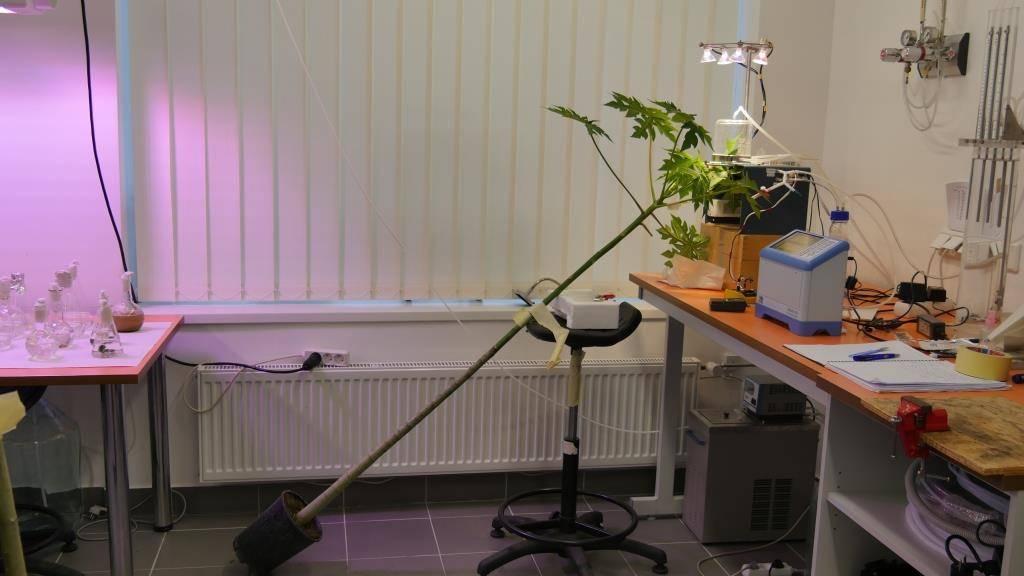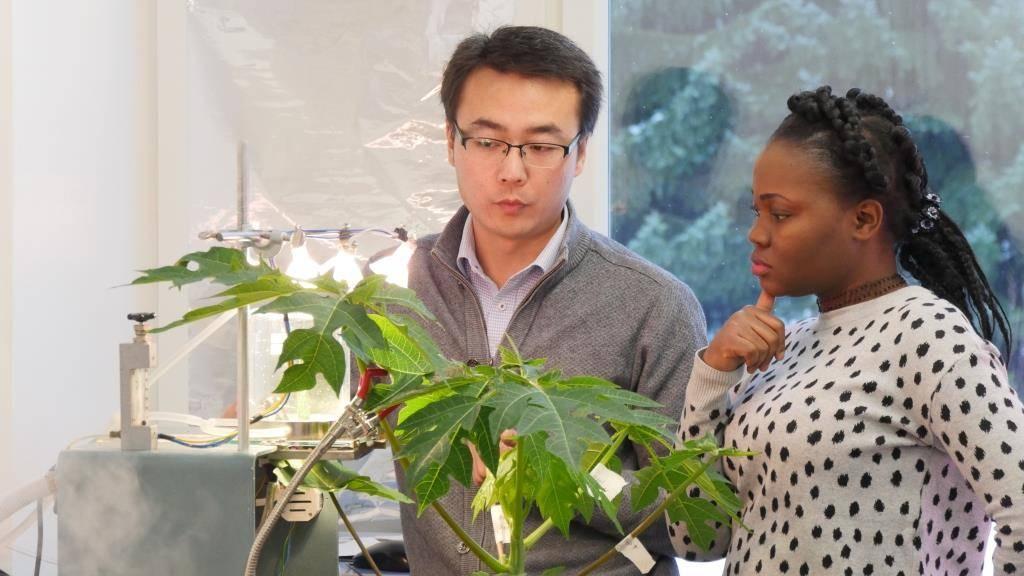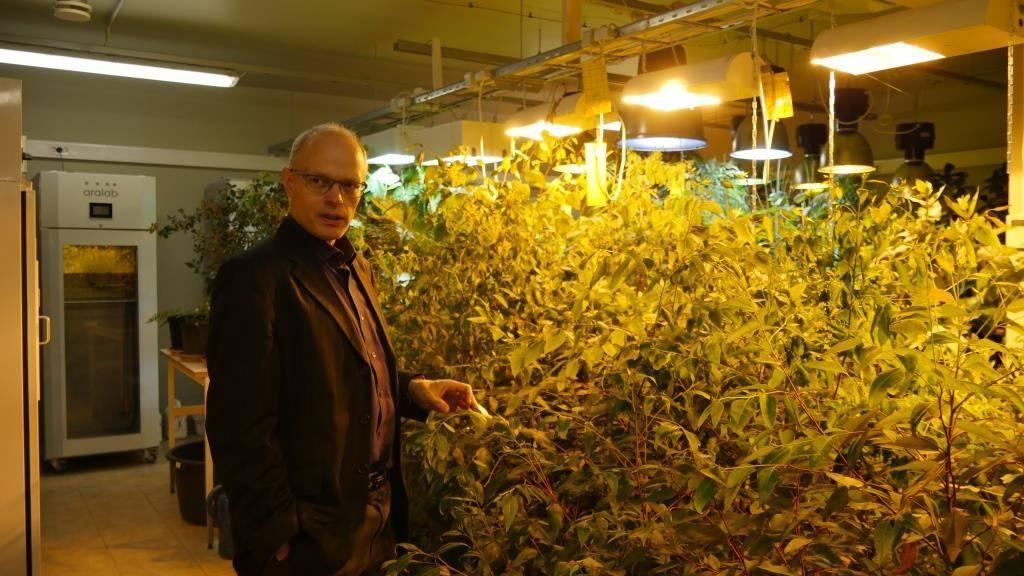The basement of the Estonian University of Life Sciences is full of secrets. Some mysterious rooms hide miniature botanical gardens full of plants from all over the world. Amid these plants, one of the youngest academicians in Estonia, professor Ülo Niinemets, and his international research group are looking for answers to very important questions – how does plant stress influence climate change and how does climate change affect plants.
This article is published in collaboration with Research in Estonia and Study in Estonia.
Plants have the potential to contribute a lot into avoiding climate change because they fix carbon. Also, stress is a very normal situation for them because they are often under stress –for example, they suffer from either limited water availability or too hot or low temperatures.
Niinemets claims that knowledge about plant stress is fundamental because it makes it possible to create a better model of climate change. He says that although the biosphere is an important component in all models of climate change, it was actually introduced into the models relatively recently. “Biosphere factors include stress responses and plant capacity to affect climate change with information about volatile organic compounds,” he explains.
What is more, understanding how plants respond to stress is very important for developing better practices for a sustainable and clean agriculture. The stress is not only climatic but can also be caused by pathogens, herbivores and so on. “If we have an idea about the components plants produce under stress and what stress corresponds to which components, we can diagnose stress in the field relatively early and keep the aid dose relatively low,” Niinemets notes. However, he adds that these components are like signals for enemies and herbivores and that is a very powerful type of biocontrol.
Quantity matters
These days, Niinemets and his team are researching several aspects of the topic. On one hand, they study how plants respond to stress and how it influences volatile organic compounds that give signals to other plants. On the other, they explore the very important role of these compounds in atmospheric processes – the compounds participate in atmospheric chemistry in many ways and are responsible for atmospheric activity; that is, the oxidative capacity of the atmosphere.
Niinemets adds that volatile organic compounds also have a certain emission response and this is important in plant-to-plant communication (for example, signalling) and in the strength of the responses. This means the severity of stress has a quantitative effect. “Stress and emissions were considered to have a connection earlier but stress was thought to be more of a qualitative signal. However, we clearly show that the stronger the stress, the stronger the signal from plants and the influence on climate,” he explains one of the important results of their research.
“We predict plants will suffer more severe stress in future climate conditions and will also have to encounter more volatile organic compounds; there will be more aerosols and clouds and this will have a negative effect on climate change,” Niinemets says.
Today, Niinemets and his research group work mainly with the plant level. They are doing a lot of screening exercises using plants from different parts of the world to understand what stress is. Basically, the aim is to characterise quantitative relations between the severity of stress and plant responses. The next step will be incorporating these into life-size models and simulating the effect of emissions in certain stress scenarios (for example, aerosol and cloud formation) and predicting implications for the climate. “Our ultimate goal is to scale up from plants to the globe,” he reveals.
International perspective
Niinemets operates an international research group. For example, it includes PhD students from China and Nigeria, such as Chikodinaka Okereke, a first-year PhD student. She completed her master’s studies in Hungary and applied for a position in Tartu. She studied plant physiology but now focuses more on how plants respond to different stresses. With fourth-year PhD student Shuai Li from China, they are now measuring and examining papayas’ responses to different stresses (for example, different temperatures, course of time).
Both Okereke and Li are really happy to work in the laboratory of the Estonian University of Life Sciences because the team is great, the facilities are well-equipped and the devices are modern.
Niinemets sees several benefits in bringing together students from all over the world. “If we have 100 applications for one position in the laboratory, we can just choose the best people to work here, and of course, it is very useful for local students to have the opportunity to communicate in English and learn from other students,” he explains.
More importantly, as the ultimate goal of Niinemets’s projects is to scale up to the world, the research group needs plants from different parts of the globe, which are not always easy to get. Niinemets mentions that many students have brought seeds when they have visited their homeland. “Thus, an international company actually has huge benefits particularly in view of the work we are doing.”
Niinemets considers an international perspective very important. “If you think of the work we are doing, Estonia is a single pixel among many and we absolutely need a global perspective! The world is really globalising and it is very important to be open, especially in science and higher education, because ultimately the mark that we have to reach is global,” he observes.
“The competition is very intense in the science community and it is important to have and be able to work with the best people and gain a broad overview to be competitive in the future world.”
Interest from boyhood
Ülo Niinemets has worked with plants since he was a schoolboy. “Back then we studied the amounts of carbon plants were fixing,” he recalls. “When we were studying photosynthetic carbon fixation, plants were very often under stress and we started investigating how plants photosynthesise under stress.”
Niinemets’s first supervisor, Kalevi Kull from (the then) Institute of Zoology and Botany of the Estonian Academy of Sciences invited him to do field work with his team when Niinements was in seventh or eight grade. Later, Kull introduced Niinemets to his brother, Olevi Kull, who was measuring photosynthesis in trees. Olevi Kull became Niinemets’s supervisor at the bachelor’s and master’s level in the University of Tartu. Niinemets focused more on stress responses during a section of his PhD studies in Germany.
Niinemets said that, at first, he was more interested in fish and he observed how fish grow at his school’s student society. “Many people don’t know that fish grow similarly to trees. So, if we cut down a tree and see growth rings, it is very similar in fish and one can actually measure the growth of fish this way. I was working with fish, but at the same time I was curious about water plants and so my interest in plants started,” he remembers.
Ultimately, Niinemets chose plants for several reasons. “Firstly, Kalevi Kull has a very strong influence because he is such an enthusiastic person and has brought many great people to work with plants. Also, plants are easier to study; in the case of fish, it depends on how much you can catch and so on – plants do not run away, so it is easier to work with them,” he explains and adds that without plants there would be no life on Earth. “Plants fix most of the organic matter on Earth – forests, everything we eat and what animals eat, or one animal eats plants and then the next animal eats the first one. So, that is actually like the very beginning of the food chain,” he says.
I
This article was funded by the European Regional Development Fund through Estonian Research Council. Cover: Ülo Niinemets at his lab. Photos by Raigo Saariste.

